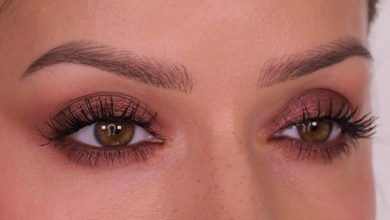White, Brown, and Pink Noise Therapy Using Enophones: A Complete Guide to Boost Your Mental Fitness & Enhancing Sleep, Relaxation, and Focus

Every day, we hear many different sounds that can affect our thoughts and feelings. Among these sounds, white, pink, and brown noises have long been seen as powerful tools for sleep, relaxation, focus, and creativity. They have many uses in different situations.
Researchers study color noises with different frequencies in fields like neuroscience, psychology, and sound engineering. Here is a brief exploration of what gives these sounds their properties or what is some of the most studied applications.
How Did Colored Noises Become Popular & Important?
White, pink, and brown noise history explores how sound affects human perception and thinking. These sounds have existed in nature for a long time. We have only just begun to study how they impact the brain.
White Noise
Harold Stephen Black, an American engineer and physicist, created white noise in the early 20th century. He became known for his significant advancements in electronic engineering.
Black revolutionized the way electrical signals were amplified and processed by inventing the negative feedback amplifier in 1928. This new idea allowed for the creation and study of white noise. White noise has equal energy at all audible frequencies.
White noise has all frequencies the human ear can hear, playing at the same intensity. This makes energy evenly distributed in white noise. White noise is a steady sound that can block out other noises. It is helpful for sound masking, aiding in sleep, and testing audio.
Pink Noise
The field of acoustics and signal processing attributed the discovery and application of pink noise. In the 1950s, scientists and researchers explored ways to improve sound quality and reduce distortions in audio systems. They found that pink noise, which has equal energy per octave, sounds more balanced and natural compared to white noise.
Equal energy per octave indicates that the sound evenly distributes its energy across different frequencies. Pink noise has lower frequencies with more power, making them stand out and creating a deeper, balanced sound.
Many people describe pink noise as soothing and natural to the human ear. It sounds like rain or rustling leaves in nature. In practice, people use it in various applications, from audio testing to sound therapy.
Brown Noise
Brown noise, often referred to as Brownian noise and red noise, has its origins in the field of physics or mathematics. Robert Brown, a Scottish botanist in the 1800s, created the term “Brownian motion.”
He noticed pollen particles moving randomly in a liquid. Scientists call this random movement Brownian motion. The audio version of this is named “brown noise.”
The frequency spectrum of brown noise follows a inverse square law, mean that the power decreases with they square of the frequency. Moving higher in the frequency spectrum results in a significant decrease in energy.
This makes the noise sound “reddish” and emphasizes lower frequencies. This creates a deep, rumbling sound. Brown noise has a smooth quality due to its focus on lower frequencies. People use it for relaxation and as a sleep aid.
Mechanism Of Action
The concept of using “color” noises to alter brain activity has been around since the late 1800s. This is when researchers first discovered binaural beats.
Researchers found that when the brain hears two different sound frequencies in each ear, it makes a new frequency. This new frequency is equal to the difference between the two original frequencies. In 1839, scientist Heinrich Wilhelm Dove found binaural beats, where two sounds make a new sound.
Finding that binaural beats impact brainwaves and mental states led to more research in neurology and psychology. As technology got better, scientists began studying white, pink, and brown noises. Researchers found that these noises have benefits for relaxation, sleep, cognitive function, and stress reduction. Research with people has helped us understand how certain sounds affect our brains and mental state.
Typical applications of white, pink, brown, and other “color” noises
Experts in neuroscience, psychology, and sound engineering have studied various types of “color” noises. These include white, pink, brown, and others. All these different sound frequencies work by influencing brainwave activity and neural oscillations, promoting specific mind states such relaxation, focus, and improved cognitive performance. Here is a summary of the most commonly observed applications:
Sleep Improvement With White & Pink Noise
Research shows that white noise can help improve sleep quality, especially in noisy environments. White noise helps cover up sudden noises, creating a peaceful environment for better sleep.
Research has shown that white noise can improve sleep by reducing nighttime awakenings and aiding in falling asleep quicker. Researchers have found that white noise benefits sleep quality. It can help individuals stay asleep longer and fall asleep more easily.
Pink noise has also demonstrated positive effects on sleep. A study in the Journal of Theoretical Biology discovered that pink noise can enhance sleep quality and cognitive performance. Synchronize brain waves during sleep to achieve this. The study showed that pink noise can help create more stable and synchronized brainwave patterns while sleeping.
Pink Noise for Cognitive Performance
Researchers have associated pink noise with improved cognitive performance and memory consolidation. A study at Northwestern University found that listening to pink noise can improve memory during tasks. This type of noise was more effective than other noises or silence.
The study showed that people were able to remember things better while listening to pink noise.
Researchers observed that this background noise had a positive impact on memory retention. Researchers found that pink noise, a calming sound, can improve memory and learning by helping with information processing. It’s a useful tool for studying.
Relaxation and Stress Reduction: Brown, pink and white noise
Researchers have found that brown noise, along with white and pink noise, induces a state of relaxation and reduces stress levels. Brown noise can help calm the nervous system, promoting relaxation and reducing tension with its deep and soothing sound.
Pink noise and white noise can help relax the brain and reduce tension by matching its natural rhythms. Scientists are still studying these sounds. Using them in sound therapy and relaxation techniques is becoming more popular. This is because of their potential to improve mental well-being.
White Noise for Focus and Concentration
White noise can help improve focus and concentration, but its impact may differ based on the task and noise level. A recent study in Nature found that listening to white noise at 45 dB can have several benefits. These benefits include improved attention, accuracy, performance speed, creativity, and reduced stress.
Similarly, researchers found that white noise at 65 dB enhanced working memory but also increased stress levels. These findings show that the best amount of white noise for improving thinking skills may vary depending on the task. This could lead to using white noise in workplaces and schools to help people perform better.
Individual Variability:
Scientific research shows that different “color” noises have benefits, but people may react differently to them. It’s important to recognize individual responses may vary. Researchers have observed that individual preferences and sensitivities play a significant role in the efficacy of different color noises. Some people may find white noise more conducive to relaxation or focus, while others may respond better to pink and brown noise.
Personal preferences, how individuals use them, and individual neurophysiological responses can vary the effectiveness of “color” noises. Experimenting with various types of noise can help you determine what works best for you. Pay close attention to how each type of noise affects you. This can assist you in finding the most effective noise for your needs.
Enophones help you get the most out of color noises
Enophones can enhance the effectiveness of “color” noises by reading and analyzing brain activity in real-time. Enophones use sensors to monitor brainwaves and determine how close someone is to their desired mental state. They use the information to change the sound levels, making the experience more personalized and accurate for the user.
Enophones can adjust the sound of pink noise to help someone relax more deeply. This customization is based on their specific needs. For instance, if the person’s brain indicates they are still somewhat alert while using pink noise to relax. This adaptive approach creates a more effective and immersive listening experience so you can maximize the benefits of white, pink and brown noises. Get your Enophones (Save 21% Off With Coupon: ZP21) now and embark on a mind expanding journey.





